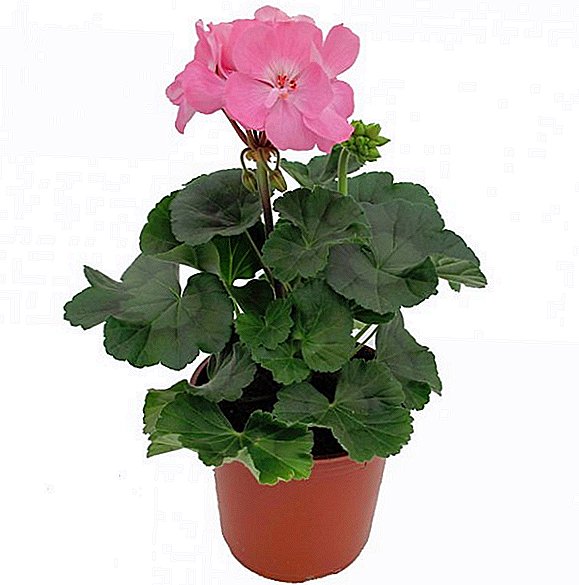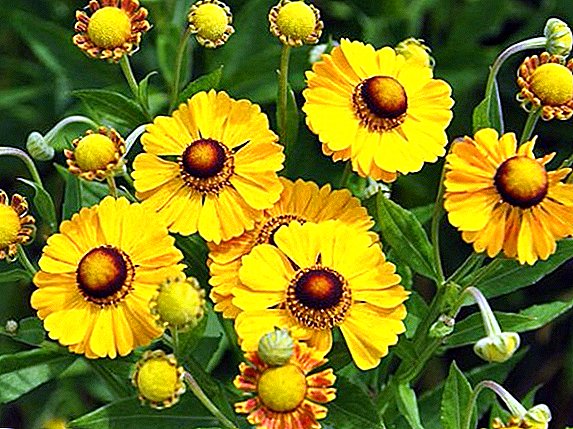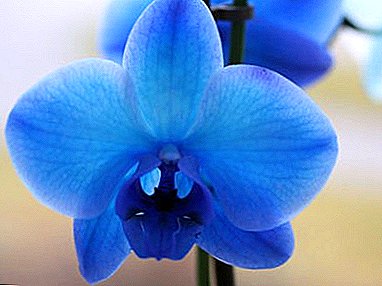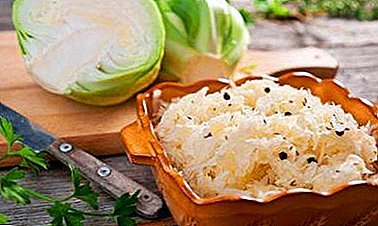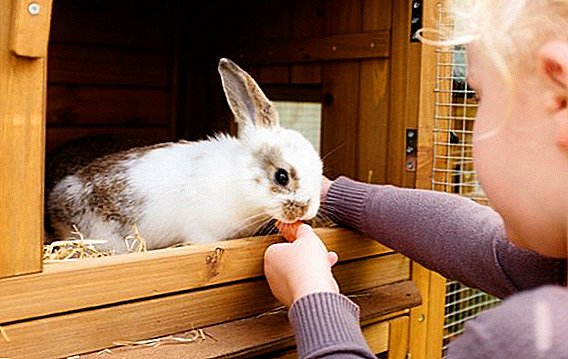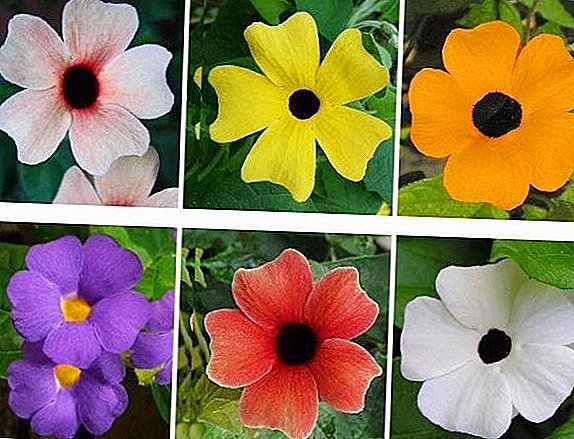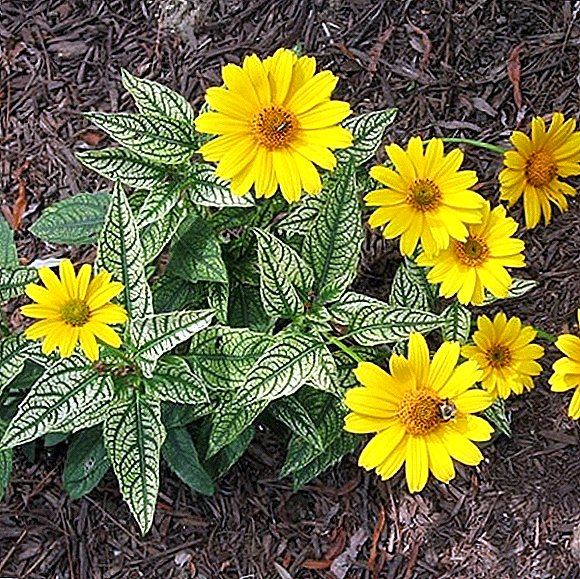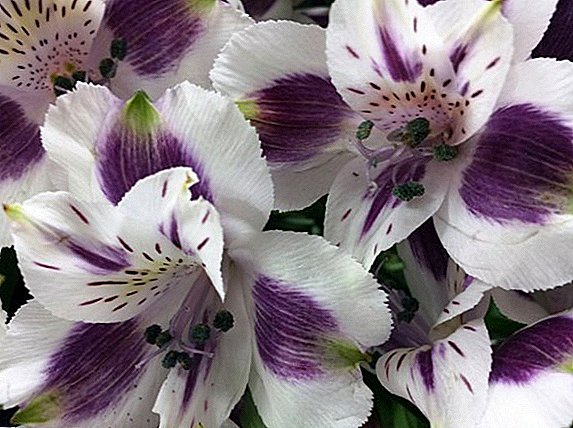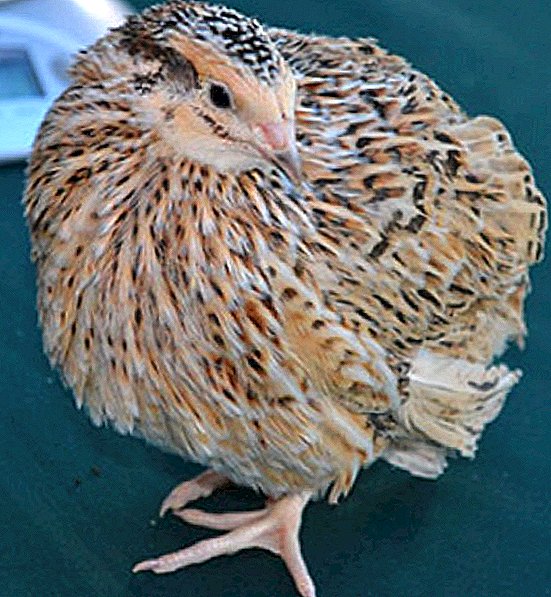
Experienced gardeners know how difficult it is to choose a tree for a small plot. After all, I want the garden to please the eye not only with careful plantings, but also with an abundant harvest of beautiful fruits. Therefore, many people pay attention to medium-sized fruit trees, in particular pears. Consider what is remarkable pear "Trout" that promises us a description of this variety, and how to care for these seedlings in our latitudes.
Breeding history
There is simply no common pedigree of this line. But most agronomists are of the opinion that its starting point was the gardens located in the territory of the German region of Saxony.
Check out such varieties of pears as "Century", "Bryansk Beauty", "Rossoshanskaya dessert", "Honey", "Hera", "Krasulya", "In memory of Yakovlev", "Klapp's favorite", "Tenderness", "In memory of Zhegalov" , "Favorite Yakovleva", "Otradnenskaya", "Avgustovskaya Dew", "Children's", "Rogneda", "Fairytale", "Severyanka", "Nika".
It is also known that the first more or less complete description of the variety was published only in 1979 (that is, the "Trout" is very young). Some put forward the version that the modern look of this fruit is the result of a long-term crossing of classic Saxon pears with imported exotics. But this is nothing more than guesses: no records on this account have ever been made public. It was from Germany and began the spread of spectacular pears around the world. 
An unusual type of fruit, coupled with the endurance of the tree, caused these pears unprecedented success with farmers in the USA, Latin America and Australia. Huge arrays planted in China. Our compatriots also appreciated her dignity.
Description and distinctive features of the variety
If you skim through the catalogs of nurseries, it seems that "Trout" - just one of the many varieties, and nothing special stands out. In fact, this is not so - this variety is difficult to confuse with others, one has only to look more closely.
Wood
This is ideal for a small area - trees usually grow up to 5-5.5 m (on good soils, all 6 may be, but no more).
Important! Characteristic veins on the leaves appear already in the one-year-old tree. As they grow, they become more saturated yellow.
Classic rounded barrel has a noble brown color, aged in a dark tone. The image is complemented by a spreading crown with thin grayish-brown branches directed upwards. Small leaves with a glossy sheen - rich green, smooth along the edges. The decorative element is added by the characteristic yellow veins on them.

Flowering starts earlier than many lines, even in the first decade of April, when white flowers with a pinkish border of petals appear on the branches. As for pollination, the work of bees is obligatory here - variety is not a self-fertile. This is usually not difficult: a light pleasant aroma of inflorescences always attracts beneficial insects. Their participation has a good effect on the fruits, which as a result receive the correct form.
Fruits
3-4 season after planting on the branches appear unusual in appearance pears. As you already guessed, the variety owes its unusual name to its fruit.
There is indeed a similarity with rainbow trout - the yellow color of smooth, thin skin, combined with a set of bright red specks immediately evoke admiration and "fish" analogies. During the season, the color can change a couple of times - the green fruits gradually turn yellow, and the sun's rays create a blush.
Did you know? The Chinese pear is considered a symbol of longevity. It used to be that even just seeing a broken branch was unfortunate.By themselves, such fruits are very neat (such a perfect pear) and small, standard weight rarely exceeds 130-150 g.

Taking the fruit to sample, all celebrate the white flesh with cream overflow and a fairly low content of grains. The impression is complemented by taste: soft and juicy, a bit like cinnamon, but at the same time sweet.
Rip off the fruit in early or mid-September, a little without waiting for full ripening. Solid collection is easier to store, and there is something to save there. The fact is that the pear "Trout" has not only low calorie content (42-47 kcal / 100g), but also a whole set of useful components. Among them it is worth highlighting:
- vitamins A, groups B, P, PP, E;
- vitamin C (one pear is able to cover 10% of daily needs);
- fiber;
- potassium and iron.
The maximum benefit can be extracted from fruits that are stored for up to 1 month, at temperatures of + 5 ... + 7 ° С. If you keep the fruit right in the room, it is best to eat it within 2 weeks. They are great for baking or salads, and small sizes make pears the best option for preservation.

How to choose the seedlings
Selection of planting material does not conceal any particular difficulties - only attentiveness and knowledge of some nuances are required of the buyer. Having decided to plant a pear and go to the market, remember that:
- the seedling should be about 1-2 years old;
Important! To purchase a tree, do not be lazy to visit the nearest nurseries - they will not only give you a sapling, but also help you with advice. The casual seller in the market of such consultations can and not give.
- "business" branches always remain intact. No scratches or cracks. It is very simple to check them: a healthy branch with a slight effort will bend, but will not break, and after that it will immediately take on its natural form;
- the best will be the whole rhizome no longer than 80 cm (with a minimum of 60). Preference is given to brownish roots with remnants of moist earth and without any damage. It doesn’t hurt to look closer - various wreckers like to spend the winter in such places, which you, of course, need nothing.
There is one purely market trick: do not rush to take the first seedling. Go through the market and see how retailers keep their goods. An intelligent seller will always put a sapling in the shade, trying once again not to overdry the roots.

Choosing a suitable place on the site
All pears love the abundance of light and heat. Variety "Trout" in this regard is no exception - will have to find a well-lit area. True, it must be reliably protected from strong winds (they are not liked by such trees).
Equally important is the layout. Keep in mind the fact that as they grow, the most sprawling lower branches will go in breadth, increasing their separation. So that they do not intertwine with other trees, a sapling try to place at least 4 meters from the nearest neighbors.
By the way, about the neighborhood. If a rowan tree is already growing nearby, it will significantly complicate the life of a fruit tree - the seedlings are very sensitive to the action of pests and diseases, and their list for pears and rowan trees is almost identical.
Did you know? Pears got to America a little over 400 years ago.Also, a young pear is sensitive to the action of groundwater. The ideal place would be the site where the aquifer lies deeper than 2.5 (or better, all 3 meters).
As for the quality of the soil, the "Trout" compares favorably with its counterparts, eagerly adopting it on heavy, clay and even saline soils. The only thing - for the successful growth of such land pre-fertilized, since the fall.

Preparatory work before landing
The place considered for a sapling begins to be processed ahead of time. Most often in the autumn digging contribute organics:
- fresh bird droppings or manure (3.5 kg per sq. M.). During the winter, they perepreyut and feed the soil. But here, too, there is one subtlety - if such processing was carried out a year earlier, a new introduction is not necessary (preferably with an interval of 2-3 years);
- compost in the same doses;
- the ashes (1 kg per square meter with a break of 3-4 years);
- siderats. Simply put, these are crops that are sown specifically for fertilizer, and when digging, they simply invest in the soil. For tree trunks, clover and alfalfa are considered ideal, although oats or rye are also quite good.
Experienced gardeners suggest that the planting pit is also desirable to prepare long before placing the seedling in it. This can also be done in the fall by digging a hole 1-1.2 m deep and up to 0.8 m in diameter. The fertile layer is carried out in one direction, and deeper deposits in the other.
The best time for such preparation is the period between leaf fall and the first frost. This has its own meaning: the soil will have time to sink without the presence of roots, for which such shifts are sometimes traumatic. 
Important! When ordering varietal seedlings, be sure to specify the exact name of the selected line, the verbal description may be a little, since some varieties are very similar. For example, "Trout" can be confused with representatives of the "Deccan du Comisse".If the hole has not been dug since autumn - it doesn’t matter: you can dig it up 10-14 days before the spring landing. However, in this case the feeding scheme will be more intense:
- 2 buckets of sand and rotted pus are brought into the pit already;
- superphosphate (1 cup) with potassium sulfate (3 tablespoons) is also sent there;
- it remains to dilute lime (aka “pusenka”) in a 10-liter bucket or 2 cups of dolomite flour. All this stuff is poured into the hole and secured with 2 more buckets of ordinary water;
- after at least 10 days of exposure, the well is ready.
Immediately before planting, the thickest roots are removed from the sapling by 10-12 cm, and the top is cut off. Places cut immediately treated with garden pitch. It turns out the workpiece, resembling a high (75-80 cm) stick without leaves and branches. 
Did you know? "According to science" pear is considered a distant relative of the rose and hawthorn - all these plants belong to the biological order of Rosaceae. There is also an apple tree.Immediately after this treatment, the rhizome is placed in a bucket of water, where it is kept for at least an hour. While the tree is preparing for the "move", its owner is slowly preparing the hole itself.
Step-by-step process of planting seedlings
The land in April managed to warm up, the frosts receded, and the purchased seedling was already in the shadows. It's time to transfer. Planting a prepared tree on the soil processed under it looks like this:
- First of all, part of the excavated soil is mixed equally with the ashes, and, after adding water, they are mixed until a thick composition similar to sour cream is obtained;
- then the roots are moistened in this liquid;
- the soil at the bottom of the hole is loosened carefully, without forgetting to bring in the sanitary mixture. Lightly powder this layer with dry earth. As a result, in the middle of the pit you get a mound, where the rhizome will be put;
- do not forget to install a bar or a peg that will act as a bobbin;
- Now it's the turn of the young. It is deepened so that the root neck is at the level of the upper ball of the soil. To find this mark is simple: this is the name of the boundary between the root and the stem. Such work is best done with an assistant - while one fixes a sapling, the second one falls asleep a hole with earth;
- making sure that the tree is firm enough, the hole is completely filled up. If after bumping there is a bump, do not worry - after watering, it will drain;

Important! Planting on the southern or southwestern segment of the site is considered optimal for a pear.
- the final chord is the garter of the trunk to the support and abundant watering (2 buckets will leave). Pristvolny circle enclose compost, peat or sawdust, which are used for mulching.

Old-school gardeners often use raw eggs (or shell). Such a simple way allows you to do without strong fertilizers at first. Although they will need a lot, about two dozen. The first is laid out at the very bottom, and the second is placed around the entire circumference before the final dropping.
Seasonal care features
So, the pear of the "Trout" variety is planted, and with proper maintenance, the owner can count on considerable benefits from this tree, without forgetting to minimize the harm that comes from external factors. This variety is considered unpretentious in terms of care. The main requirements remain its consistency and the timely implementation of simple suburban procedures.
Soil care
The owner of an unusual variety is immediately interested in features. glaze. Nothing complicated: during the first season young saplings moisten only with warm water. The following months after disembarkation it is advisable to carry out abundant weekly “fillings”. A soil that sags after landing will willingly take 2-3 buckets at a time. 
Did you know? The first to cultivate a pear tried the ancient Greeks, to whom these trees came from Asia Minor.During the hot summer months, sprinkling will be the best option: having adjusted the necessary force, you moisten the pear without much effort. Yes, and the moisture will not evaporate as quickly as with the "bucket" approach.
Starting from the 2nd season, watering is somewhat reduced (up to 1-2 times per month), minimizing after harvest. With him is inextricably linked and loosening. After letting the dirt shake a little, the circles go through with a chopper-trident. Powerful glanders, in turn, require accuracy - a large scale can injure weak roots.
This manipulation is usually carried out a day after wetting, until the earth has dried completely.
Mandatory and weeding: weeds are removed immediately after they appear. Leave even a small blade of grass is not worth it, they immediately attract dangerous pests. 
To retain moisture practice mulching. The easiest way is to wrap the tree trunk with organic materials that, in addition, will not allow the weeds to grow. For this purpose, take:
- fresh cut grass or straw layer 10-12 cm thick;
- moss (10 cm);
- sawdust (7 cm);
- ground nettle or bark, which are placed in a 5-centimeter layer;
Important! Normal for an adult tree is considered the depth of the trunk of 15 cm.
- rotted needles. It is more enduring - 3-4 cm of shelter will be enough for a sapling.

Top dressing
Feeding is required only from the second year. Both organic and complex mineral water are used. The only exceptions are nitrogen-rich compounds.that stimulate the growth of green mass, slowing down the development of fruits.
Seasonal fertilizers may be applied as required. For adult trees the most useful will be:
- spring application (during flowering). For such purposes, carbamide is quite good: 100-120 g, diluted in 5 liters of water, is enough for 1 tree;
- nitroammophoska, which is most useful in May, when the fruits are formed. The working proportion is 1: 200, for one plant it takes 2.5-3 buckets of the mixture;
- phosphorus and potassium solutions introduced by foliar method (the best time for them is mid-July);
- in the fall, superphosphate is taken in granules (2 tbsp. l.) and potassium chloride (1 tbsp. l). Add 10 liters of water, and you get a strong tool for making pristvolnye circles. This dose is enough for 1 square. m;
- wood ash in the autumn digging circle (150 g per 1 sq. m). It lay at a depth of 8-10 cm.
Preventive treatment
A pear with beautiful fruits is sensitive to aphid attacks and the effects of scab. Bacterial burns are considered another ancestral disease.
To prevent the occurrence of such unpleasant symptoms, every spring sanitary whitewashing of trunks is carried out. The method is effective, but sometimes it is not enough. It is not surprising that many gardeners prefer spring (before the movement of the juice) and summer spraying, which are done in the middle of summer.
Did you know? Written mentions of these fruits are found in Russian chronicles, starting from the XII century. Only then they were called "Khrushami", and in the people and at all - "muzzles".
For trees growing at risk, strong formulations like Karbofos, Nitrafen or Entobacterin are needed. Homemade products remain more benign: a soap solution, a 3% solution of potassium permanganate, and garlic decoctions.
Bordeaux liquid, popular in our area, even in low concentration, is quite dangerous for young trees (the slightest mistake in the dosage will immediately respond with faded leaves). Whichever of the drugs you use - carefully read the instructions and control the dosage.

Cropping and crown formation
The final formation of the crown takes pears about 5-6 years. This is enough to make 5 skeletal branches. But the basic trimming begins long before that, even in the first year. In short, the whole course looks like this:
- in June, three most developed shoots are left on the seedling, growing at intervals of 10-20 cm. The same applies to the top of the trunk. This will be the first tier;
- with proper pruning, the center conductor rises above the side branches no more than 25 cm;
- after the strengthening of the first "floor" the formation is combined with sanitary pruning. From the spring of the 2nd season shoots growing inside the crown or at an angle are removed. Near the center appears the so-called competitor, going at an acute angle. It is removed immediately, while the horizontal (fruit) branches do not touch;
Important! Young pear responds well to the introduction of urea. Spring dose is 15 g per 1 square. m grenade circle. For more adult (4 and more years) trees, the norm is increased to 20 g over the same area.
For 4 years a healthy tree requires only thinning and cleaning of sick, broken or old twigs. If pruning was missed in a certain year, the need for major thinning may arise by that age (along with branches, individual trunks can be removed, blocking the light).
Protection against cold and rodents
The harvest is collected, the leaves have fallen, and the calendar reminds of close frosts - it is time to warm the tree.
The most popular way - the manufacture of "fur" for the trunk. Felt, reed or straw wrapped with burlap and tied to a tree. Many also lay a thickened layer of mulch (but it is more suitable for areas with cold and light snowing winters). Dense ruberoid or rough film is also not bad, but they will have to be removed immediately after the onset of heat. Having missed the moment, you risk to steam the trunk.
A separate topic - protection from mice, hares and other guests of the garden. Here a variety of methods are used:
- fir spruce branches, assembled from branches 80-85 cm long. Such constructions are rigidly tied and set down with needles;
- for better effect, they are also wrapped with metal nets with small cells;
Did you know? Before tobacco was brought to Europe, the local population used leaves of fruit trees, including pears, for smoking.
- winding nylon pantyhose or non-worn. Such materials are too tough for animals;
- in addition to all these tricks, you can hang a few black circles of average diameter along the lower branches (15 cm is enough to flush the rodent off with a movement);
- some improvise by hanging plastic bottles with naphthalene embedded in them. Its smell makes its way through the holes and drives the animals away with its acrid flavor.

We learned what can please the owner of the pear line "Trout". We hope this information will help to grow a tree that will become a real decoration of the garden or garden. Greater yields to you!


